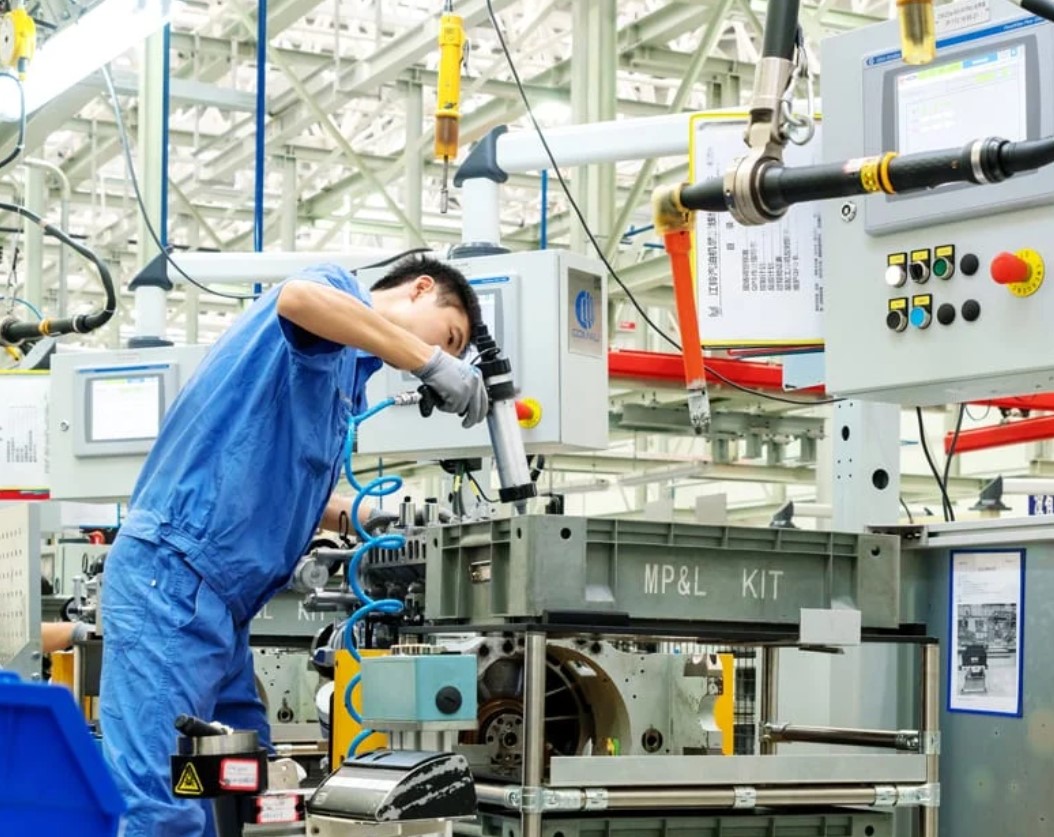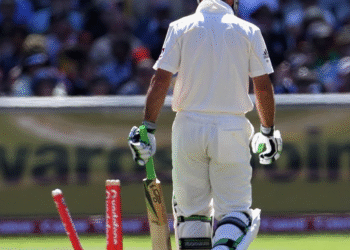China’s factories continued to churn out goods at a brisk pace in April, offering a dose of optimism for an economy still wrestling with global trade tensions and patchy domestic demand.
The National Bureau of Statistics reported a 6.1% year-on-year rise in industrial output last month. It wasn’t quite as fast as March’s 7.7%, but it beat analyst expectations and showed manufacturers are far from hitting the brakes.
Industrial Output Outpaces Forecasts, Again
Industrial output wasn’t supposed to come in this hot. Analysts polled by Bloomberg had penciled in a 5.7% rise. Beijing casually brushed that aside with a 6.1% print.
That’s not just noise — it’s a signal. Despite slower momentum from the previous month, China’s factories are still running strong. Manufacturing continues to be the backbone, especially when other parts of the economy are coughing and sputtering a bit.
A one-percentage-point drop from March may raise eyebrows. But in this case, the slowdown is more of a cool breeze than a warning siren.
Industrial production remains one of China’s few economic engines still firing on most cylinders.

Consumers Aren’t Exactly Lining Up at the Cash Register
If factories are pushing harder, shoppers are being more cautious.
Retail sales rose just 5.1% in April. That’s down from March’s 5.9% gain. And economists? They were betting on something stronger. Turns out, Chinese consumers aren’t feeling quite as spend-happy as expected.
It’s not exactly a disaster — but it’s a slowdown. A softer labor market? Maybe. Low confidence? Probably. Or maybe just the usual April lull?
Here’s what that looks like in numbers:
| Economic Indicator | April 2025 | March 2025 | Analyst Expectations |
|---|---|---|---|
| Industrial Output (YoY) | 6.1% | 7.7% | 5.7% |
| Retail Sales (YoY) | 5.1% | 5.9% | 5.5%-5.7% |
| Fixed-Asset Investment (YTD YoY) | 4.0% | 4.5% | 4.3% |
| Urban Unemployment Rate | 5.1% | 5.2% | — |
So yeah — mixed bag.
And speaking of mixed…
Investment Slows While Jobs Get Slight Boost
Fixed-asset investment — think roads, bridges, factories — grew by just 4% in the first four months of the year. That’s slower than the 4.5% growth seen previously. Not a nosedive, but definitely not full throttle either.
Yet here’s the twist: the urban unemployment rate dropped. Just slightly, to 5.1% from March’s 5.2%. But it counts.
Two things are happening at once: less investment, but more jobs. It’s weird. But then again, China’s economy often defies simple logic.
And it’s not all gloom. Job numbers show the labor market isn’t folding under pressure — not yet, at least.
Trade Tensions Still Loom Large
Even as the factories hum along, that whole China-U.S. trade drama continues to hang in the air like smog over Beijing on a bad day.
Yes, there was a truce in May. But “truce” doesn’t mean “peace.” Companies still aren’t fully convinced it’s safe to spend big again. No one wants to be caught mid-project when another round of tariffs drops from the sky.
Yet, despite that, China’s industrial machine has kept going. It hasn’t collapsed under the weight of tariffs. It hasn’t frozen in place waiting for Washington’s next move.
That’s more than just luck. It’s resilience. Quiet, steady resilience.
And businesses? They’re adjusting:
Many Chinese exporters have started rerouting goods to Southeast Asia and Europe
Firms are diversifying supply chains to limit U.S. exposure
Manufacturing clusters are focusing more on domestic tech and green energy
Adapt or die, as the saying goes.
Exports Shift Direction as Analysts Rework Growth Forecasts
April’s export data turned out to be another surprise. Exports beat expectations, thanks in large part to China turning to new markets. Less going to the U.S., more to Southeast Asia and parts of Europe.
There’s a recalibration going on.
And international analysts have noticed. Goldman Sachs, among others, has nudged its 2025 China growth forecast up. That’s a vote of confidence, even if the number is still under Beijing’s target of “around 5%.”
Economists are betting the truce with the U.S. will hold long enough to delay further stimulus. That gives China a bit of breathing room — maybe not much, but enough to adjust strategy and keep the wheels turning.
One economist from a major U.S. bank put it bluntly: “They’ve bought time. Now they need to buy growth.”
Fair point.


















